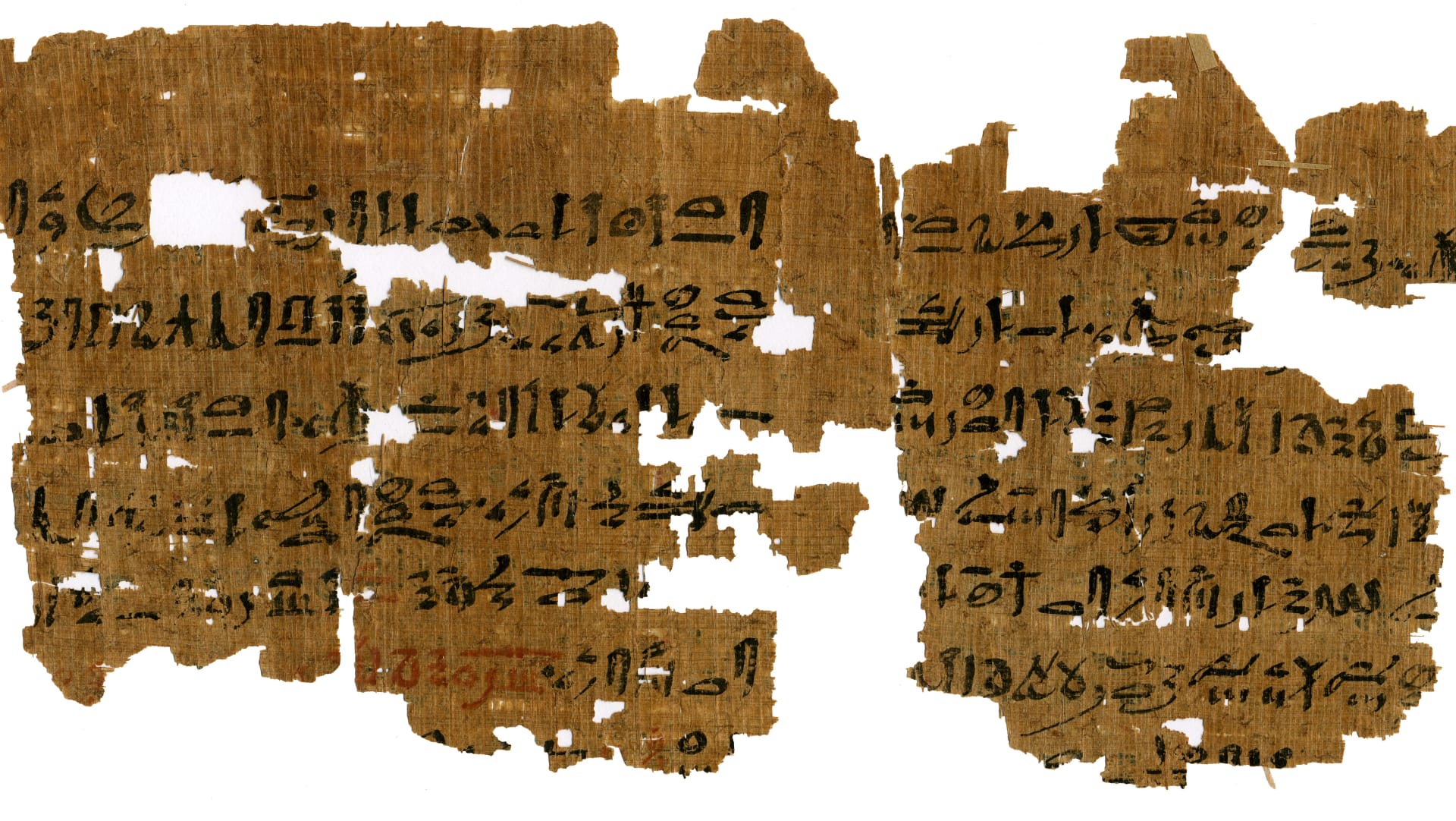أتلانتا، الولايات المتحدة الأمريكية (CNN) -- هل تعرف أنه منذ حوالي 3,500 عام، كانت النساء تكتشفن حملهن بطريقة مشابهة جداً للطريقة التي تستخدمنها اليوم؟ فما كان عليهن سوى أخذ عينة بول والانتظار بصبر لنتيجة تفاعل كيميائي ما.
وتظهر ورقة بردية مكتشفة من المصريين القدماء ومؤرخة لعصر المملكة الحديثة، في فترة ما بين 1500 و1300 قبل الميلاد، تعليمات تدل النساء للتبول في كيس من الشعير وآخر من الإيمر، وفقاً لباحث في جامعة كوبنهاغن، يدرس الوثيقة.
ويقول النص الذي كُتب بالهيراطيقية، والتي هي طريقة الكتابة الهيروغليفية للمصريين القدماء، إن "حمل المرأة يؤكد إذا نمت أحد النبتات المزروعة. فإذا نما الشعير، ولدت ذكراً، وإذا نما الإيمر، ولدت أنثى. وإن لم تنمو كلا النبتتين، فإنها لن تلد".
ويُعتبر تشخيص الحمل هذا، الذي ترجمه عالم آثار مصرية دنماركي في العام 1939، مجرد مثال واحد عن مجموعة كبيرة من البرديات المصرية القديمة التي تملكها جامعة كوبنهاغن، والتي حصلت عليها من منح مؤسسة "كارلسبيرغ". ومن بين 1400 بردية، هناك نسبة صغيرة منها هي نصوص طبية، بقيت معظمها غير مترجمة حتى الآن.
ويقول عالم الآثار المصرية كيم ريهولت، رئيس مجموعة برديات كارلسبيرغ، إن هذه المواد نادرة للغاية، إذ "هناك أقل من 12 بردية طبية مصرية قديمة محفوظة بشكل جيد."
ويُعتبر اختبار القمح والشعير من الأشياء المكتشفة سابقاً، بفضل ورقة بردية تحمل تاريخاً مماثلاً محفوظة في المتحف المصري في برلين. ورغم ذلك، فقد اكتشفت العديد من الأشياء الأخرى منذ بدء التعاون البحثي في سبتمبر/أيلول من العام 2017.
حتى الآن، اعتقد العديد من علماء الآثار المصرية أن الحضارة آنذاك لم تكن مدركة لوجود الكليتين، إلّا أن بعض النصوص الطبية المترجمة تناقش العضو، ما يبين أن معرفتهم بالتشريح كانت أكثر تقدماً مما كان يُعتقد سابقاً.
كما تظهر برديات أخرى علاجات مختلفة لأمراض العين، مثل داء الشعرة، والذي يحصل عندما تنمو الرموش إلى داخل العين. حيث تصف البردية استخدام دواء يُصنع من دم السحالي والثيران وأنثى الحمار والماعز، ومن ثم يوضع في العين.
وتشير صوفي شيودت، إحدى طالبات الدكتوراه التي تحلل النصوص، أنه قد تكون هناك مجموعة طبية موحدة تحتوي على اختبارات وعلاجات تُستخدم في مصر القديمة. إلّا أنها تحث على الحذر منها أيضاً، لأن عدد البرديات القليل وعدم اليقين فيما يتعلق بمكان نشأتها جغرافياً، قد يصعب عملية تحديد النصوص.
ولكن، هناك شيء واحد مؤكد، وهو أن اختبار الحمل هذا استمر لفترة طويلة، إذ تقول شيودت: "وجدنا ذات الاختبار في الطب اليوناني والروماني، وفي الشرق الأوسط خلال العصور الوسطى، وفي التقاليد الطبية الأوروبية".
ولم تنجح وسيلة الاختبار هذه في الماضي فقط، بل قد تتمتع أيضاً ببعض المضمون العلمي اليوم. فوفقاً لمقال نُشر في مجلة التاريخ الطبي في العام 1963، قام باحثون باختبار هذه النظرية، ليجدوا أنه في 70٪ من الحالات، تسبب بول النساء الحوامل في نمو النباتات، إلّا أن الاختبار اُعتبر غير موثوق للتنبؤ بجنس الأطفال.
ويقول العلماء اليوم أن سبب دقة الاختبار يعود إلى مستويات هرمون الاستروجين العالية الموجود في بول المرأة الحامل، ما يساعد على تحفيز نمو القمح والشعير.
إذاً، هل يعني هذا أن الأطباء المصريين القدماء عرفوا عن الهرمونات الموجودة في البول؟ وفقاً لشيودت، فإن فكرة التأثيرات الهرمونية لم تكن موجودة أبداً، وإنما تنسب دقة الاختبار للتجربة والخطأ المكرر فقط.

